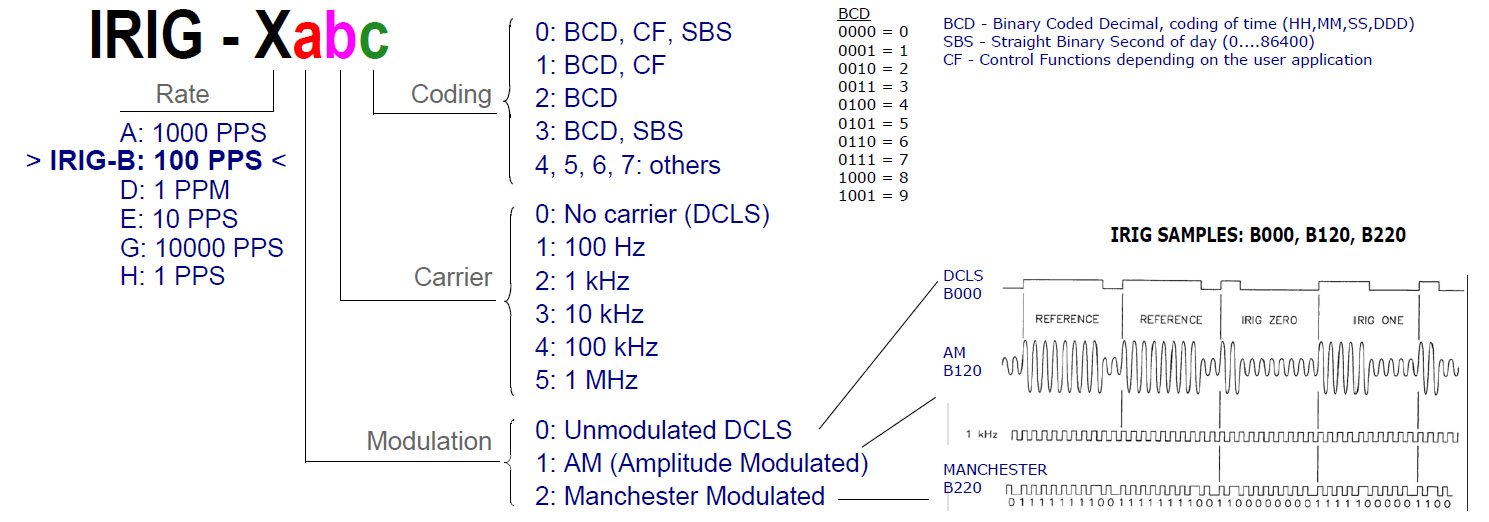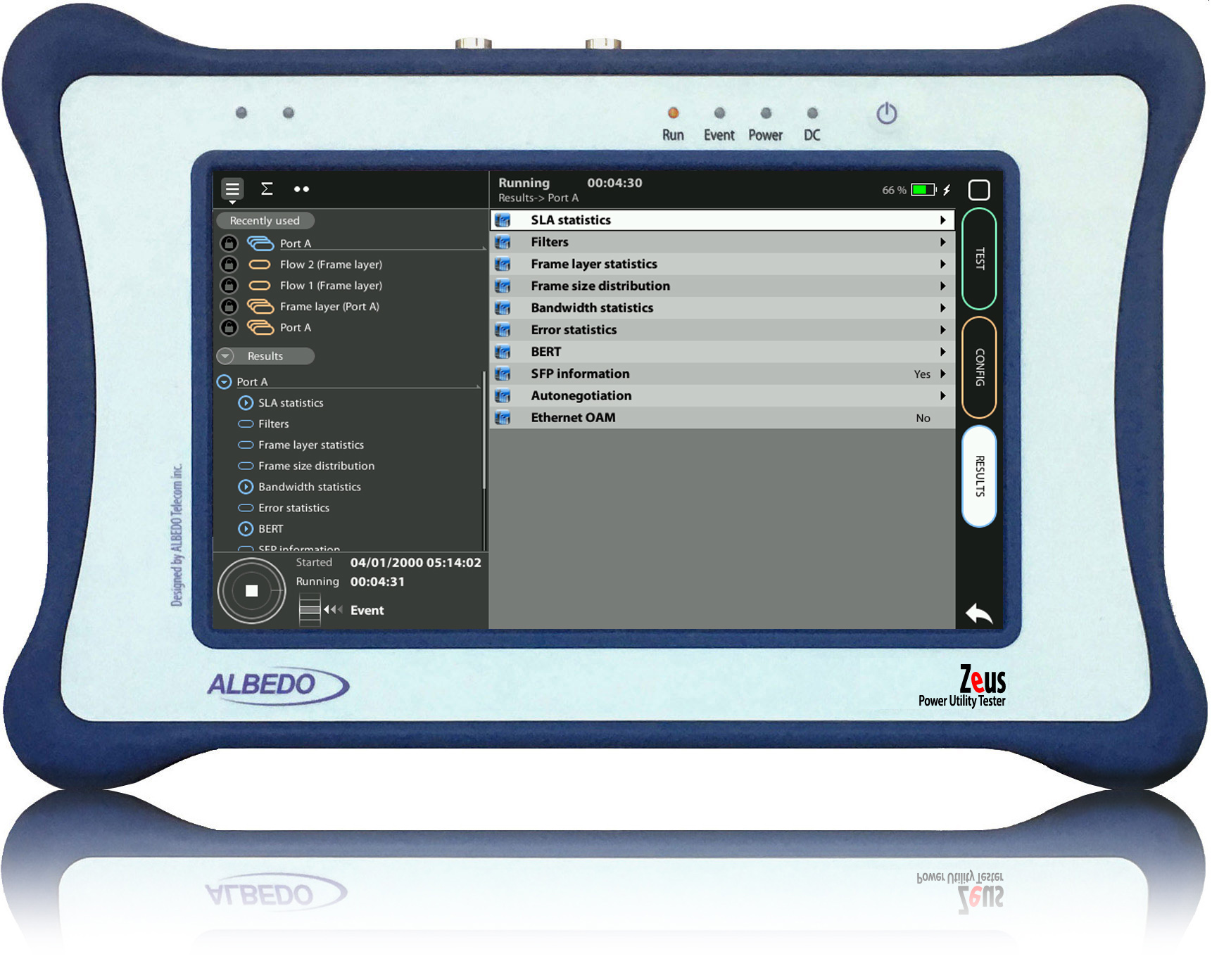Accurate & effective IRIG-B test
IRIG-B provides accurate timing for internal clocks and systems to timestamp events in aerospace, utilities and control systems, so verifying IRIG-B performance is very important as it is the reference for mission critical applications.
ANTWERP NOV/11/2023
Inter-Range Instrumentation Group-B
IRIG-B is a standard for time and frequency synchronization used in a variety of applications, including synchronizing substations and airports. The length of time that IRIG-B will be used for these purposes depends on several factors, including the specific requirements and needs of the systems being synchronized, as well as any potential advances or improvements in technology that may make other synchronization methods such as PTP more effective or efficient. In general, however, IRIG-B is a widely-used and well-established standard for time and frequency synchronization, and is likely to continue being used for these purposes for the foreseeable future.

Fig 1. IRIG-B structure.
IRIG-B is a standard for time and frequency synchronization that has evolved over time, and there are several different versions of the standard, including optical, electrical, and AM versions. The specific version of IRIG-B used in a given application will depend on the specific requirements and needs of the systems being synchronized, as well as the availability and compatibility of the different versions. For example, the optical version of IRIG-B is often used for long-distance synchronization, while the AM version is commonly used for short-range synchronization. Overall, the various versions of IRIG-B are designed to provide reliable and accurate time and frequency synchronization for a wide range of applications.
Some common examples of industries that use IRIG-B include:
- Aerospace and defense: IRIG-B is often used in aerospace and defense applications to synchronize systems and equipment, such as radar and navigation systems, missile guidance systems, and satellite communication systems.
- Telecommunications: IRIG-B is commonly used in telecommunications systems to synchronize clocks and timing signals, which is essential for ensuring the accurate transmission and reception of data.
- Power and energy: IRIG-B is frequently used in power and energy systems, such as electric power grids, to synchronize substations and other equipment, which is necessary for maintaining the stability and reliability of the power system.
- Transportation: IRIG-B is also commonly used in transportation systems, such as railways and airports, to synchronize clocks and other systems, which is essential for ensuring the smooth and efficient operation of these systems.
In other words, IRIG-B is a widely-used and well-established standard for time and frequency synchronization, and it is used in many different industries and applications where accurate and reliable synchronization is required.

Fig 2. Airports are one of the industries using IRIG-B
IRIG-B time assurance
IRIG-B time code is used in a wide range of applications, including the synchronization of data acquisition systems, power grid monitoring, network timing, and the precise time-stamping of events in various scientific and industrial settings. It helps ensure that different devices and systems are all operating on the same time reference, which is essential for accurate data analysis and coordination.
Testing IRIG-B involves evaluating the accuracy, reliability and synchronisation performance of the Time Code signal. The specific parameters and methodology for testing IRIG-B may vary depending on the application and equipment used. However, here are some common parameters and test methods that are typically considered:
- Time accuracy: The primary purpose of IRIG-B is to provide accurate time information. Testing should verify that the time code signal accurately represents the intended time, with minimal deviation. The time synchronisation error should be measured and documented.
- Signal integrity: Ensure that the IRIG-B signal is free from interference, distortion and noise during transmission. This may involve measuring the amplitude, frequency and waveform quality of the signal.
- Timing Jitter and Wander: Evaluate the stability and consistency of the IRIG-B signal over time. Timing Jitter and Wander are critical parameters, especially in applications where precise timing is essential, such as telecommunications and data acquisition.
- Transmission medium: Depending on how IRIG-B is transmitted (e.g. electrical signals, fibre optics, radio signals), testing should focus on the specific characteristics of the transmission medium to ensure that signal quality is maintained.
- Signal reception: Test the equipment receiving the IRIG-B signal to ensure that it correctly decodes the time code and synchronises its internal clock accordingly. This involves checking the equipment’s ability to lock onto the IRIG-B signal and maintain synchronisation.
- Frequency accuracy: Some IRIG-B signals contain frequency reference information. Ensure that the frequency information is accurate and matches the intended reference.
- Data validation: Verify that the data within the IRIG-B timecode conforms to the standard and includes all necessary components such as time, date and status information.
- Synchronisation performance: Measuring and evaluating how well different devices or systems synchronise to the IRIG-B signal. This may include assessing the time offset between the reference time and the time of the synchronised device.
- Redundancy and Failover: In some applications, redundant IRIG-B sources may be used for reliability. Test the ability of the equipment to switch between multiple IRIG-B sources and maintain synchronisation in the event of signal loss or failure.
- Documentation: Properly document test results, including any deviations or problems encountered during testing.
The specific methodology for testing IRIG-B may involve using specialized test equipment, such as time code analyzers, oscilloscopes, and other measurement instruments. It’s important to follow industry standards and guidelines relevant to your application, and manufacturers of IRIG-B equipment may provide specific testing procedures in their documentation. Additionally, consulting with experts or organizations experienced in IRIG-B testing can be beneficial to ensure accurate and reliable results.

Fig 3. Zeus and xGenius are the two most popular and featured testers to verify IRIG-B.
IRIG-B testers
ALBEDO testers such as xGenius and Zeus have features to monitor frequency and time clock signals, including IRIG-B time codes, and runs synchronization tests on them.

Fig 4. IRIG-B-module to test the quality of the signal.
xGenius and Zeus are multi-technology tester to install and maintain networks up to 10 Gb/s. It includes all the features needed in Ethernet optical/electrical transmission and PTP/SyncE synchronization. It also provides full IRIG-B/T1/E1/E0/Datacom support while the C37.94 interface and One-way Delay makes it ideal for Power Utilities.
IRIG-B Network Clock
ALBEDO also manufacturers clocks that support IRIG-B interfaces. One of the models is Net.Time Ω allows for multiple configurations to meet the timing demands of any industry, including data centres, stock exchange, broadcast, IoT, power utilities, or air traffic control. The result is always a reliable and fault-tolerant solution to loss of reference, network outages and power failures. Simultaneously Net.Time Ω simplifies the migration to PTP without abandoning investments in NTP, IRIG-B or BITS, facilitating on this way the integration, interaction and translation of all types of signals, profiles and protocols.



